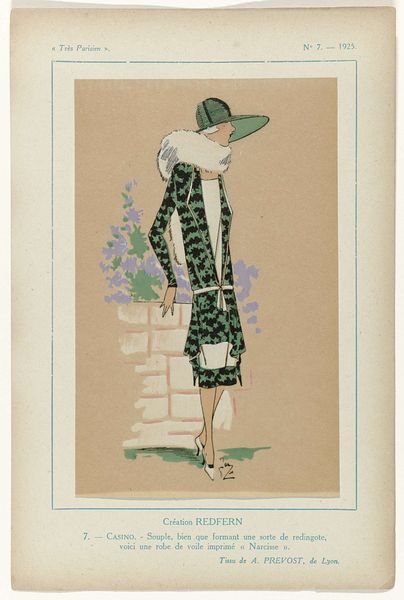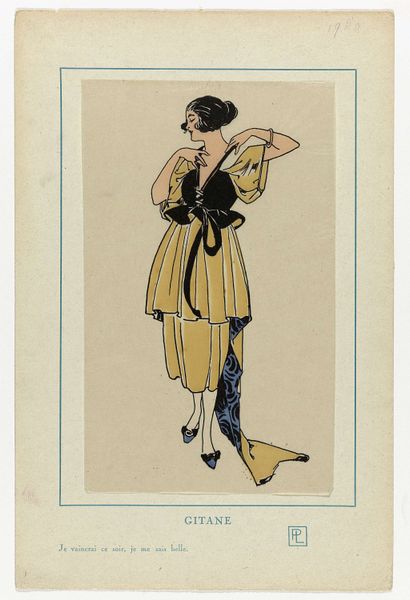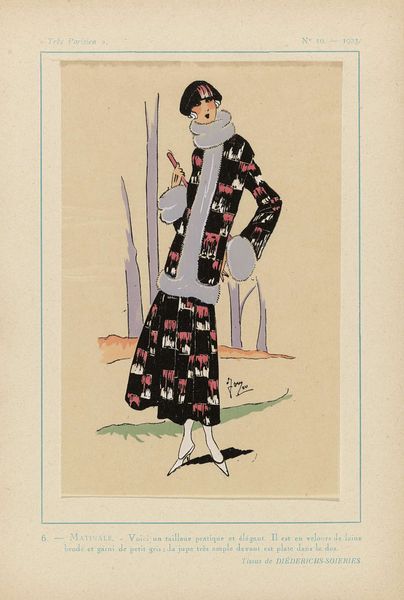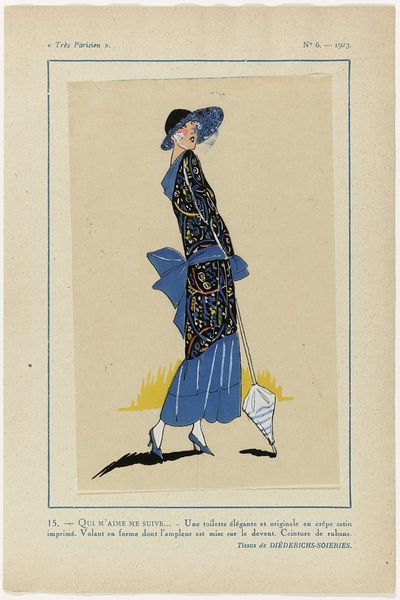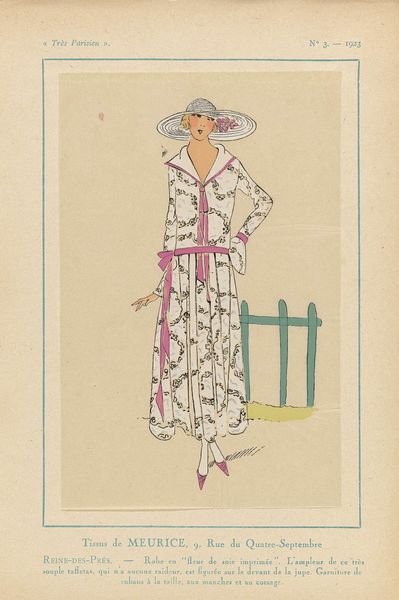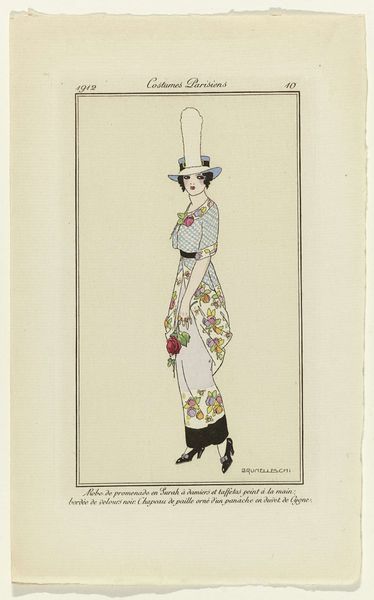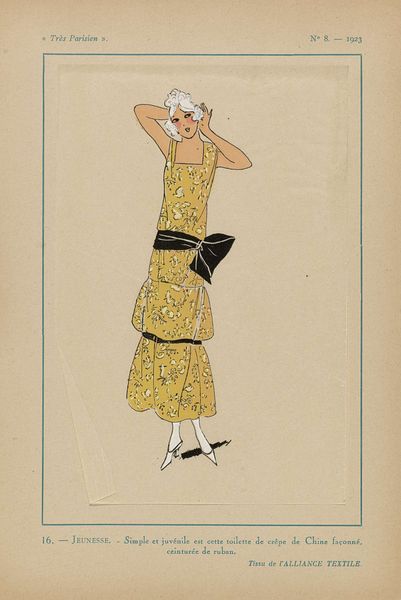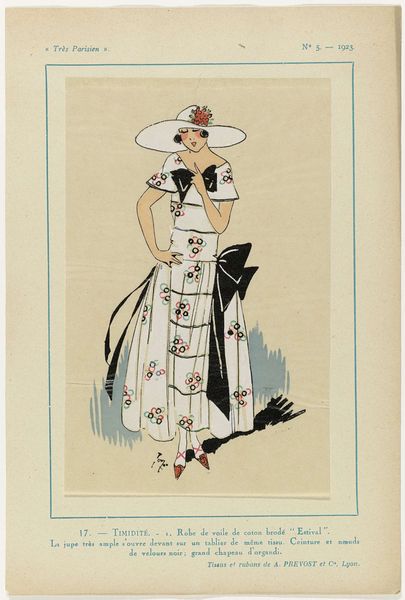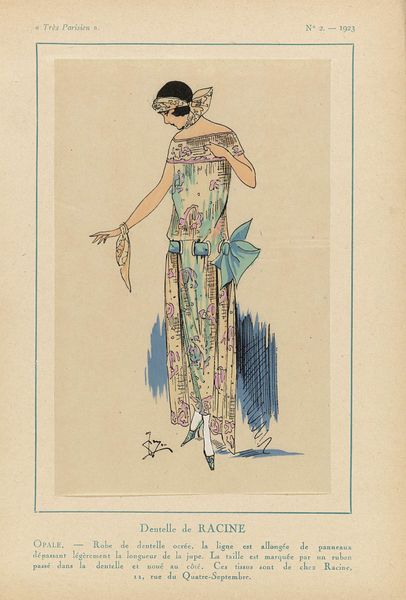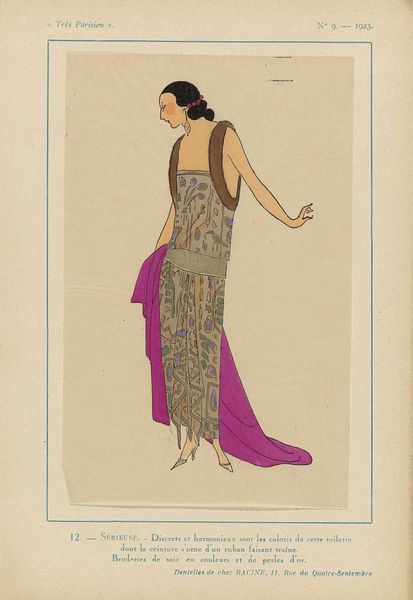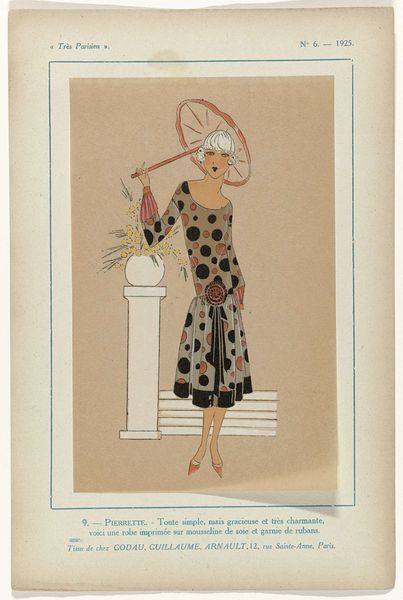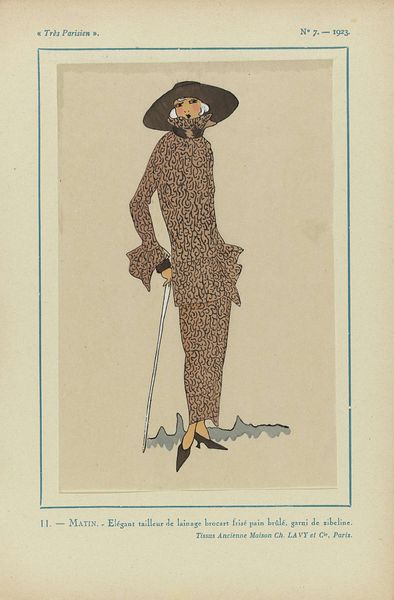
Très Parisien, 1923, No 9: 9 - KISS-ME. - D'une élégance exquise,... 1923
0:00
0:00
Dimensions: height 269 mm, width 180 mm
Copyright: Rijks Museum: Open Domain
Editor: This is a watercolour and ink drawing from 1923, titled "Tr\u00e8s Parisien, 1923, No 9." It's currently housed at the Rijksmuseum and seems to depict an elegant woman in a patterned dress. What strikes me most is the flattened perspective and the stylized rendering of the figure – very Art Deco, almost like a fashion plate. What do you see in this piece, looking at its visual properties? Curator: Precisely. Let's begin with the planar composition. Observe how the artist utilizes line and color to flatten the picture plane. The figure is presented almost as a set of shapes and patterns, subordinating depth and volume. Note, particularly, how the patterning of the dress acts as a compositional element, vying for our attention with the figure herself. Does this subordination impact the meaning, in your view? Editor: I think it draws my attention more towards the abstract elements and away from her individuality. The woman almost becomes secondary to the design of her dress, it becomes an object more than a portrait. Curator: An astute observation. The use of bold outlines also serves to compartmentalize sections of the artwork into discrete visual segments, similar to stained glass. Further, examine the economy of line used to delineate the background. Do you find this adds or detracts from the artwork's overall visual appeal? Editor: It seems to add to the focus on the subject by contrasting with the negative space surrounding her. I’d say that knowing the title – "Tr\u00e8s Parisien" – heightens my awareness of the design because it’s very chic, urban, and self-conscious. The line makes her pop from the neutral colors around her. Curator: Indeed, and consider the interplay between figure and ground. It emphasizes the aesthetic ideals of the time, subordinating individual characteristics to an overarching aesthetic. By flattening perspective and minimizing realistic representation, we emphasize decorative qualities and a modernist sensibility. Editor: I see now. So, it's less about representing a "real" woman and more about showcasing an ideal of modern style through design, form and shape? I think looking at how line and form work makes it easier to connect to the image and makes art of this period seem easier to study. Curator: Precisely. These are key elements of formalist interpretation. Analyzing these fundamental design choices gives insight into both the artwork's aesthetic function and cultural expression.
Comments
No comments
Be the first to comment and join the conversation on the ultimate creative platform.
